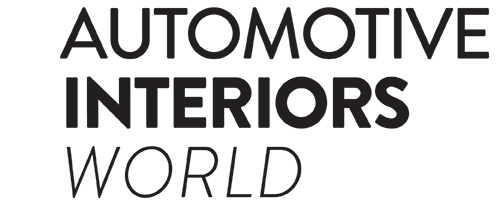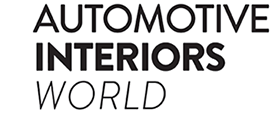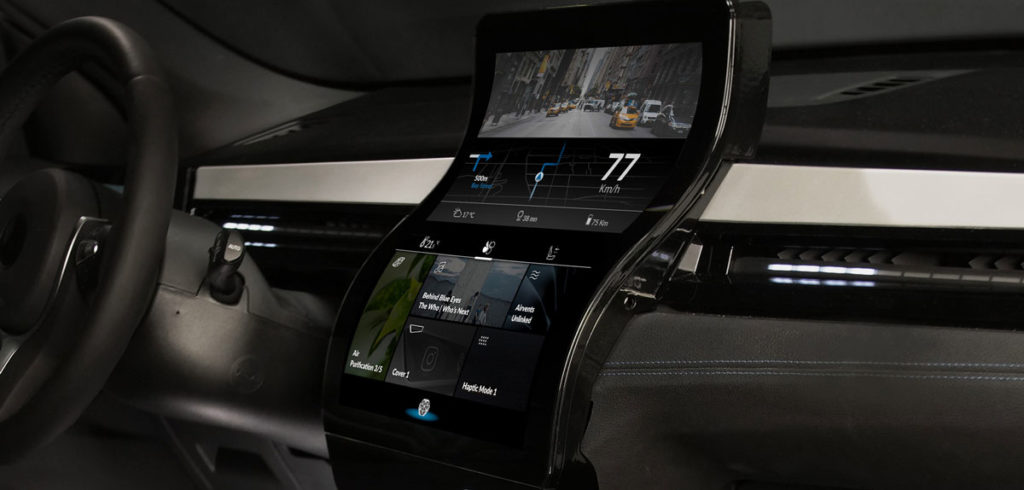Chuck Milligan, CEO at FlexEnable, looks at how flexible display technology can help meet consumer demands while providing an affordable and robust solution.
When it comes to the future of transportation, the role of innovation is absolutely essential. Consumers are always looking for the next advancement in the goods they consume, but vehicles have always been one sector that comes with even higher expectations. Thanks to years of Hollywood blockbusters, many of us find our imaginations going that little bit further when we are asked to envision the car of the future. Just look at the latest launch by Tesla, accompanied by cyberpunk aesthetics and a synth soundtrack, the entire event was a love letter to the expectations consumers now have.
One area that is already seeing innovation at a rapid pace is display systems within vehicles. These have evolved significantly in the past few years, with IHS Markit forecasting automotive display system markets will grow to a total of nearly US$21bn in 2022. This highlights where the future of automotive interior display is going – as there’s a growing need for interactivity and connectivity.
Similar to mobile phone technology, people want designs that look and feel part of the vehicle. Displays and touchscreens within vehicles have their own challenges and need to become better integrated into the curved and shaped surfaces of the interior. At the same time, these new surface displays must also meet strict automotive and reliability requirements – all at an affordable cost.
Visual requirements
Auto makers are looking for innovative display technologies that merge with the car interior design while offering passengers a more secure and personalized environment. There is a demand for displays that can be shaped and conformed to the non-flat surfaces of the car interior. Be it an S-shaped center console, a round display on the steering wheel or a curved digital sideview mirror, these screens should follow the design and not dictate the design.
Display brightness is also a key consideration when choosing new display technologies for cars. High-brightness displays ensure that the information displayed can be viewed in daytime and sunlit conditions. Therefore, any new display technology needs to meet or exceed the brightness of LCD screens used in vehicles today.
This is why there needs to be a greater emphasis on the material being used to develop the cars of the future. One flexible screen technology, known as Organic LCD (OLCD) addresses several issues by replacing the amorphous silicon on glass displays with displays made with high-performance organic transistors on plastic using a very low temperature process.
Some automotive companies are experimenting with flexible OLED which has been adopted in some high-end smartphones and smartwatches. However, this technology has several significant limitations for vehicle applications: lower reliability and lifetime compared to LCD; lower brightness; and much higher cost than LCD.
By making a plastic version of LCD that can be manufactured on existing active-matrix LCD production lines, it reduces cost, risk and time of making the transition comfortable. Unlike flexible OLED, the displays can be bright with no impact on lifetime, as this is primarily a function of the backlight implementation. One example of OLCD in use comes from Novares which incorporated OLCD screens into its demo car – Nova Car 2. These included an S-shaped center console, left and right side concave digital sideview mirrors and an OLCD passenger HMI touchscreen integrated with the rear door panel.
Lifetime requirements
Automotive surface-integrated displays need to last as long as the lifetime of a vehicle which could be more than 10-15 years. This is much longer than the lifetime of many mainstream consumer electronic products such as smartphones and smartwatches.
These displays also face a unique environment and therefore require high level reliability. They have to be tested in much higher and much lower temperature and humidity conditions compared to consumer electronics.
How to build the future now
As well as meeting all the requirements listed above, there is still the issue of affordability. Automotive manufacturers are facing tighter margins as production costs increase, alongside legislation around environmental considerations. OLCD screens offer a smart solution to this, with lower temperature manufacturing process, lower production costs and longer life spans than other flexible display technologies.
There is no time to wait for auto makers, as the steps to safeguarding their future need to be taken now. Those who embrace the latest technologies will be the ones who win the race.



